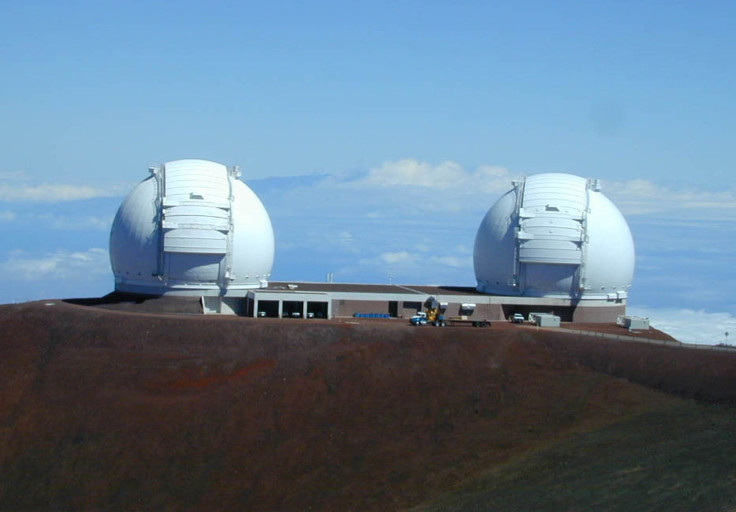‘Sacred mountain protectors’ move against astronomers in Hawaii

Mauna Kea, the tallest summit in the world, has been a place for a growing conflict between sanctity and science early in 2015. Scientists have been placing telescopes on the summit because for them it is the best location in the world for space observatory, but some scientific projects have been halted by native Hawaiians as they believe the dormant volcano is the most sacred land in the entire Pacific.
For both parties, the summit is the best point where the sky and earth meet, but each carries a different view. Considered a temple and a house of worship by Hawaiians, it is the site of the genesis of their people and is the burial ground for their most revered ancestors. Hawaiians believed the gods created Mauna Kea for them to ascend to the heavens.
For astronomers, the summit offers the best spot to observe deeper into space, which have already placed 13 telescopes in the landscape of the mountain. And a group of astronomers are aiming to build another, which they say is the world's most sophisticated telescope - at the top of Mauna Kea.
Protesters, or they refer themselves as protectors, have set camps at the mountain base for months to attempt to stop the construction of the massive telescope. The attempt is not simply just about a telescope, said one of the protectors, Kaho'okahi Kanuha. The project is a "desecration of a sacred mountain; it's desecration of cultural sites, burial grounds."
With the growing challenge in both groups, several rounds of arrests have been reported and the construction of the new telescope has been halted more than once. Kanuha was one of the people who camped out on the mountain for months and was one of more than 30 people arrested when the construction started in April.
Protesters believe the construction for astronomical research has already gone too far and there should be no more new structures. Since the 1960s, native Hawaiians have been challenging development on Mauna Kea, after the University of Hawaii started to turn the summit into a leading site for research.
The state of Hawaii took almost seven years to grant the TMT team a permit to build the telescope, with several public hearings and legal proceedings. The public has opposed the decision early on, but the state believes that the company, the Canada-France-Hawaii Telescope, or CFHT, met the legal criteria to grant the conservation district use permit.
However, Hawaii's Supreme Court agreed to hear oral arguments this month from a group of opponents who sent their pleas to the court. The petitioners believe the new telescope will negatively affect the physical environment of the mountain as well as interfere with the rituals they practice.
"We are in favour of scientific advancement," said petitioner Kealoha Pisciotta. "But what is happening up here is scientific advancement that is required to occur at the destruction of our sacred place and of a delicate ecosystem that is found nowhere else on the planet."
The state allowed the TMT team to construct the new telescope under the agreement to "conserve, protect, and preserve" against overdevelopment and ensure structures do not have a "significant and adverse" impact on the natural and cultural resources of Hawaii. The state of Hawaii and the TMT team said the new telescope will use the land appropriately according to the law.
Michael Bolte, associate director for the TMT project, believes that there could be ways to do the science without violating the sanctity of the mountain.
To try to find a way to fix the conflict between the scientific community and native Hawaiians, Hawaii Governor David Ige had issued a plan of action in May asking The University of Hawaii to stop the operation of 25 percent of the existing telescopes if the TMT is operational. Ige also proposed that no more telescopes will be built on the summit.
But the protectors are still raising their concerns, as the TMT will be built on a fresh site on the mountain, not in the same site with the past telescopes. In July, the governor also signed a new law making it illegal to camp overnight on the mountain for safety reasons.
The act was just a way to silence and prevent the protectors from protecting their land, petitioners said. However, they’ll keep the petition ongoing as long as the construction continues.
"Whatever day TMT and their machines decide to leave the mountain, that's when we can take a little break," Kanuha said. "We'll be here as long as it takes."
Contact the writer at feedback@ibtimes.com.au or tell us what you think below





















